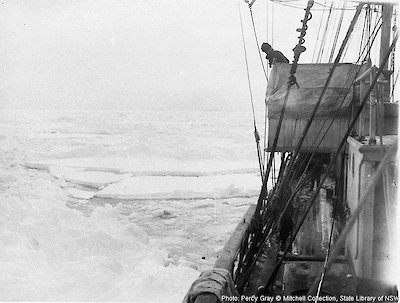No place like home
Blizzards frequently sweep the ice shelf’s flat, featureless topography for days at a time. The winds can reach 150 km/h — significant compared to most places, though not approaching the ferocity of a Cape Denison blow.
But precipitation is another thing. Snow accumulates at the rate of several metres in a year, quickly burying all evidence of a human presence — including something as prominent as a main base for an expedition. Such places make humans seem very insignificant.
An indication that a floating ice platform is not an ideal place to live is the absence of breeding animals on Shackleton Ice Shelf. Winter sojourners, such as emperor penguins and Weddell seals, and the summer breeders prefer more accessible sea-ice, rocky shores or land-based ice, such as the Queen Mary and Kaiser Wilhelm II coasts to the south and west.
But nutrient-rich seas around the Shackleton Ice Shelf bring an abundance of wildlife in spring and summer. Adélie and emperor penguins and several seal species are regular summer visitors to the ice front. On the ice shelf itself, Frank Wild’s men observed skuas and petrels.

